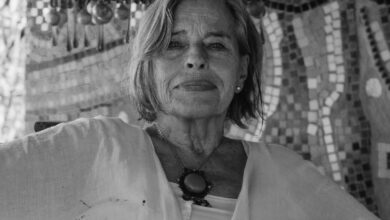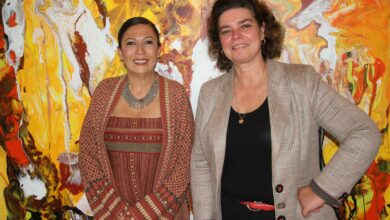East meets west in Lotfi Abou Sariya’s solo exhibit at the Picasso Art Gallery in Zamalek, where bold colors radiate from a prolific collection budding with passion and creativity.
Abou Sariya’s paintings are dynamic, sometimes overly so. He draws inspiration from music, life, desire, women, the human visage, and , most of all, from contrasting cultures and the power of civilization.
In abundant styles, such as intricate lithography drawings, Salvador Dali-like abstract oil paintings, and pastel drawings, Abou Sariya shows versatility. The endurance of civilization over time is a recurrent theme in the artist’s work.
After graduating from the Faculty of Fine Arts in 1964, Lotfi Abou Sariya traveled to Belgium, where he received a certificate of honor from the Brussels Royal Academy of Fine Arts, in 1975. A member of many art associations including the Syndicate of Fine Artists, Abou Sariya is also the President of Artists without Borders (Aristes Sans Frontières).
Inaugurated on Sunday evening by Belgian Ambassador Bruno Nève de Mévergnies, the opening drew a large crowd to the spacious showroom tucked in a narrow alley.
Mévergnies congratulated the artist on a “unique blend of east and west, devoted to transmitting messages of love.”
Posing for pictures and shaking the hands of many friends, fans, and acquaintances, Abou Sariya handled the spotlight with grace.
Close to the entrance, a painting of a woman in a bright red blouse writing in a large copybook and surrounded by a blue background patterned in letters from different languages, highlights the importance of communication. “Before a human being can start to speak, he creates symbols to express his emotions,” explained the artist.
There is no dearth of color in Abou Sariya’s exhibition. Deep red dominates one painting, which depicts a woman hunched over a history book among symbols of various civilizations including the Statue of Liberty and the Eiffel Tower. “This crimson color is a hot area,” said Abou Sariya. “This represents the desire of human beings, their desire to live.”
This is not the only one of Abou Sariya’s paintings which is loaded with symbols and allusions. Fruit provides metaphors. A peeled pomegranate symbolizes the deep layers of the human brain. A broken avocado in a painting about justice reflects the occasional futility of lawyers, according to the artist.
Despite his respect for the world’s civilizations, Abou Sariya holds his native Egypt on a high pedestal. These sentiments are reflected in a painting of an Egyptian woman, her hair home to miniature individuals from Pharaonic, Ottoman, Greek, Roman eras, as well as modern times. “The Egyptian civilization is extremely rich, and therefore it is a leader among all others,” said Abou Sariya.
A large clock is important in the work. “Civilization does not fear time, but rather time fears civilization,” explained Abou Sariya.
One of the most captivating pieces in the gallery was a portrait of a woman gazing into a mirror, surrounded by cards, an hour glass, a clock missing its hands, a dinner table set for one, roses, and eagles. “This is a painting about loneliness, and the struggles of an aging woman,” explained Abou Sariya.
But by far the highlight of "Colors of Civilization" was a series of paintings called “The World Sings,” each featuring one instrument from a different culture. “I felt overwhelmed by the amount of violence I see in the world, and so I wanted to create some romance through my art,” said Abou Sariya.
A curved piano is featured in a glamorous scene, the pianist’s hands raised in front of a bold orange sun and a blue background. Finding the piano’s traditional shape bland, the artist chose to add some curves to it, rendering its shape more dramatic.
The violin, saxophone, harp, and tabla, among others, are also dramatically incorporated into some paintings, lending song and romance to the exhibition.
"Colors of Civilizations" runs until 10 October at the Picasso Art Gallery in Zamalek.




